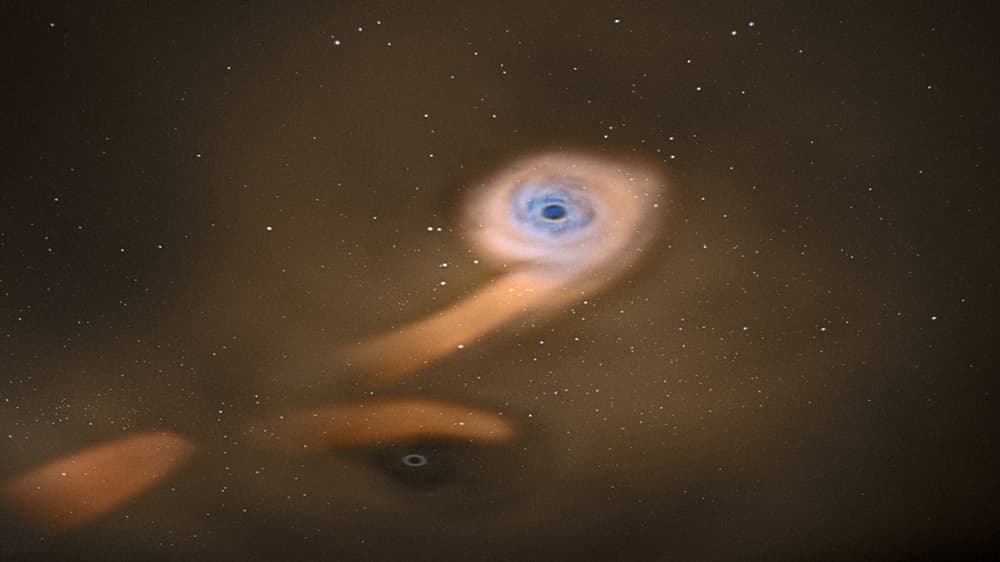When galaxies collide, the supermassive black holes (SMBH) at their centre merge after a long spiralling dance around each other. Several studies have been conducted to underpin everything that happens from the beginning of the galaxy mergers to the SMBHs becoming one; the final details of this process are still unclear (this is called “The Final Parsec Problem”). Physics allows black holes to orbit around each others in stable orbits when they are less than a parsec apart, and once they reach a stable orbit there is no mechanism to make them collide. Stars and gas can be used to steal angular momentum from the system and make it unstable, but so far we have not found robust evidence to discern the correct hypothesis.
The reason for this research is the knowledge that dual black holes are only present in transitional stages of galaxy mergers. So, even though they might not merge, they do in most cases: we only see a single SMBH in post-merger galaxies. But now we have found evidence of a dual SMBH in a relaxed galaxy.
ESA’s X-ray observatory XMM-Newton serendipitously observed the pair while they were ripping a passing star apart. This kind of event is called a “tidal disruption”. The gas of the star spiralling towards the black holes interacts dynamically with the black holes themselves and it generates powerful light emissions. X-rays are a great candidate to study black holes because they are the brightest emitters of such short wavelengths.

Artist’s impression of a pair of black holes. The pair is sharing the gas from the star destroyed by their gravitational pull.

